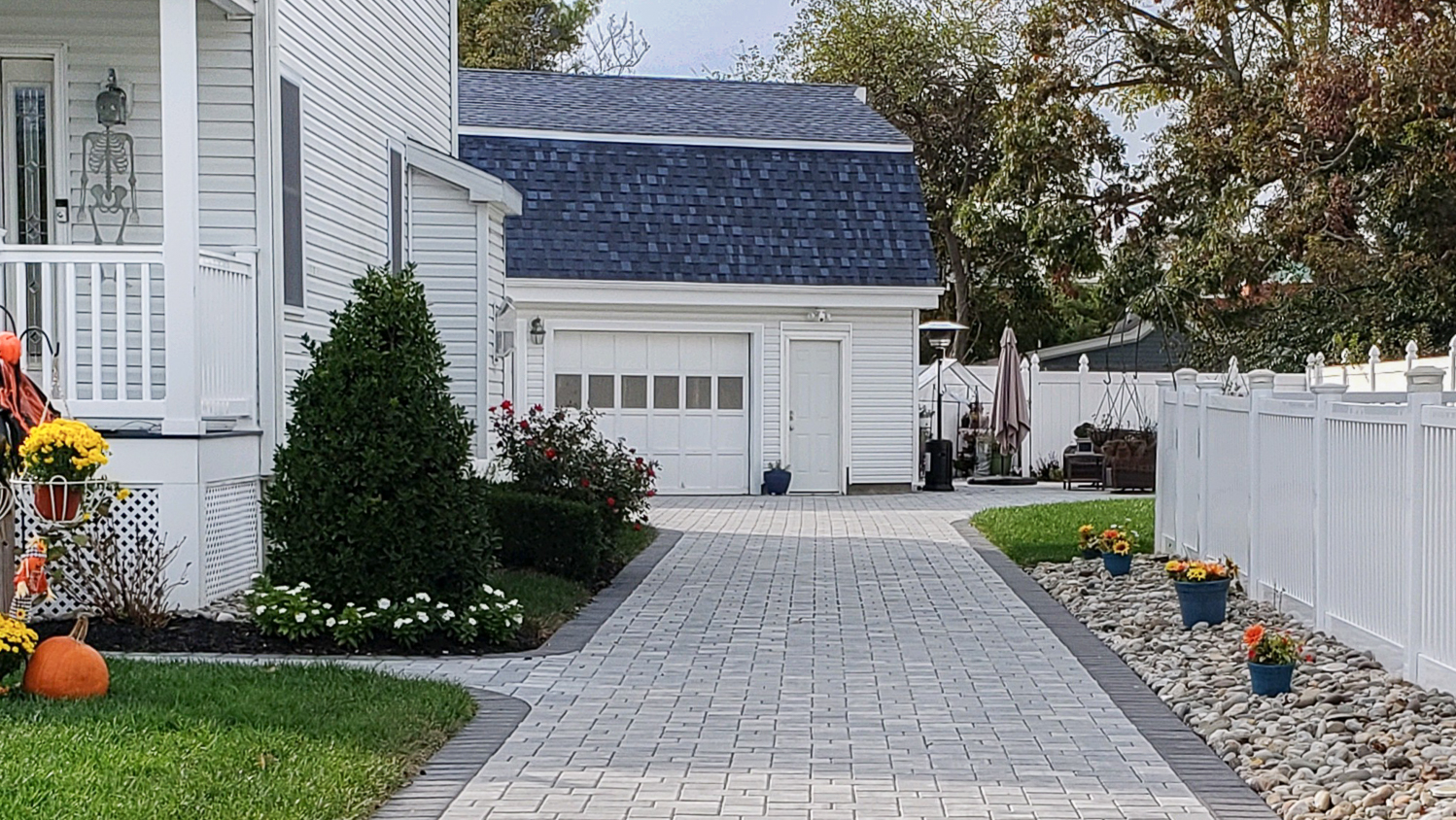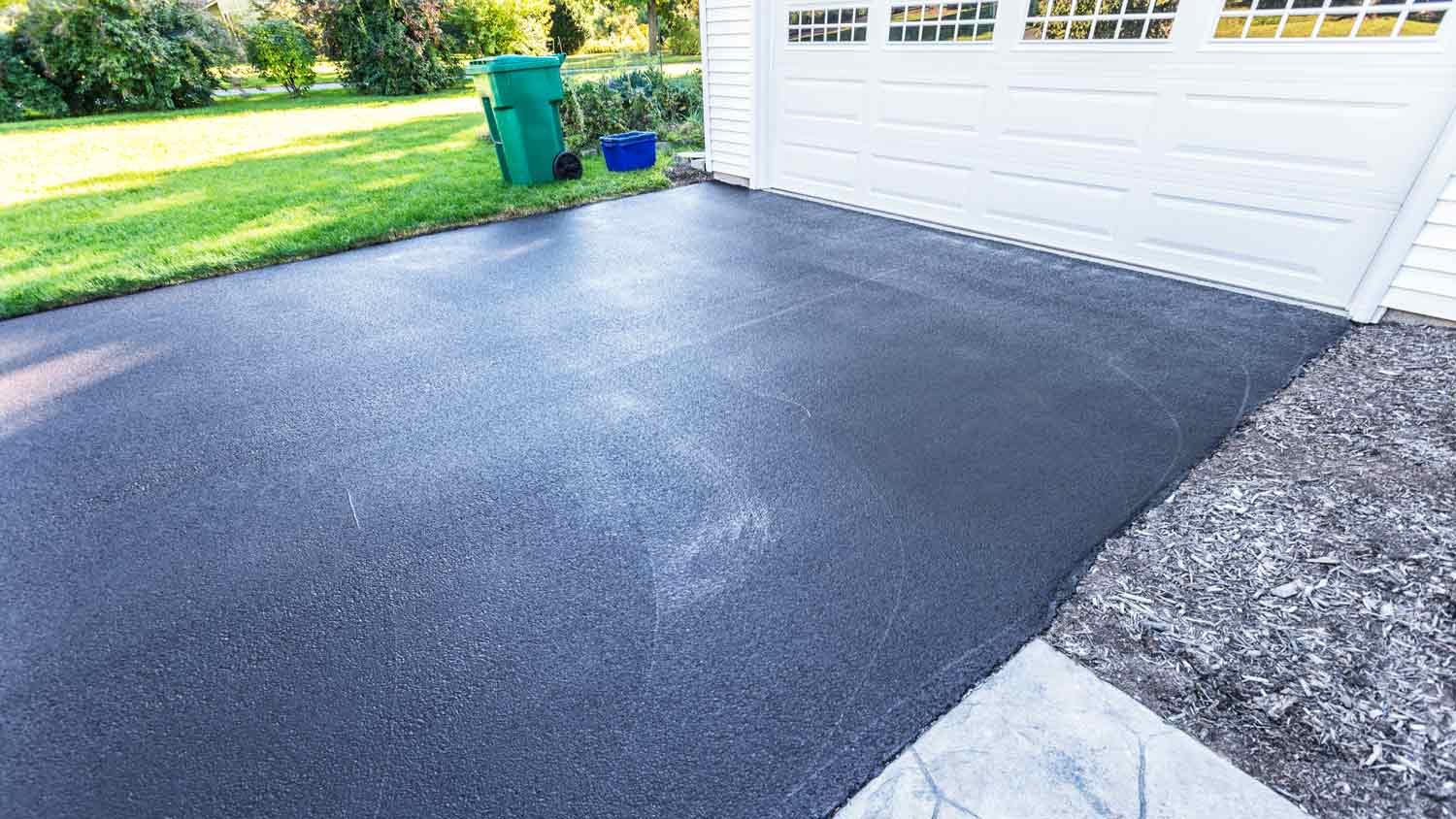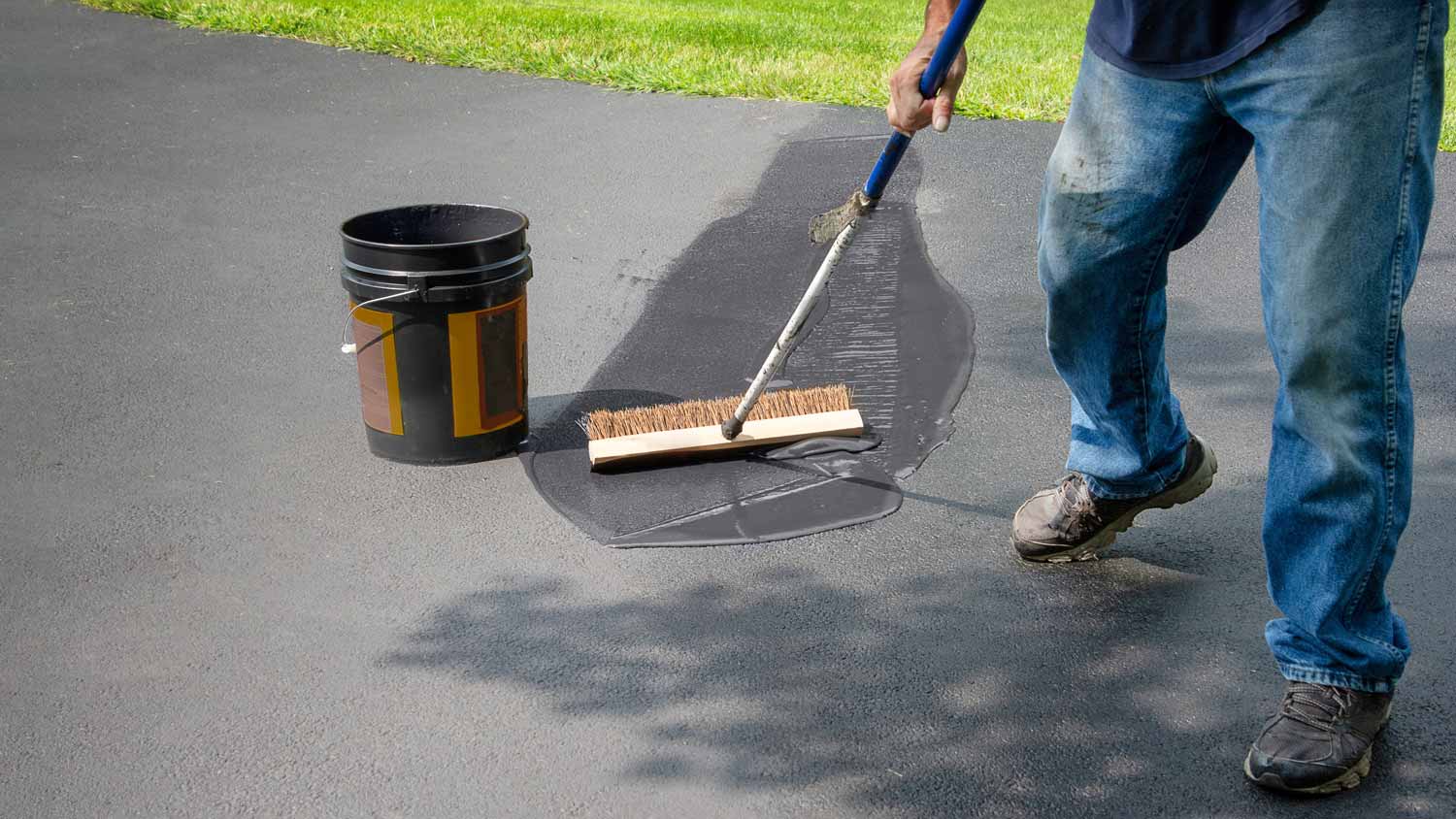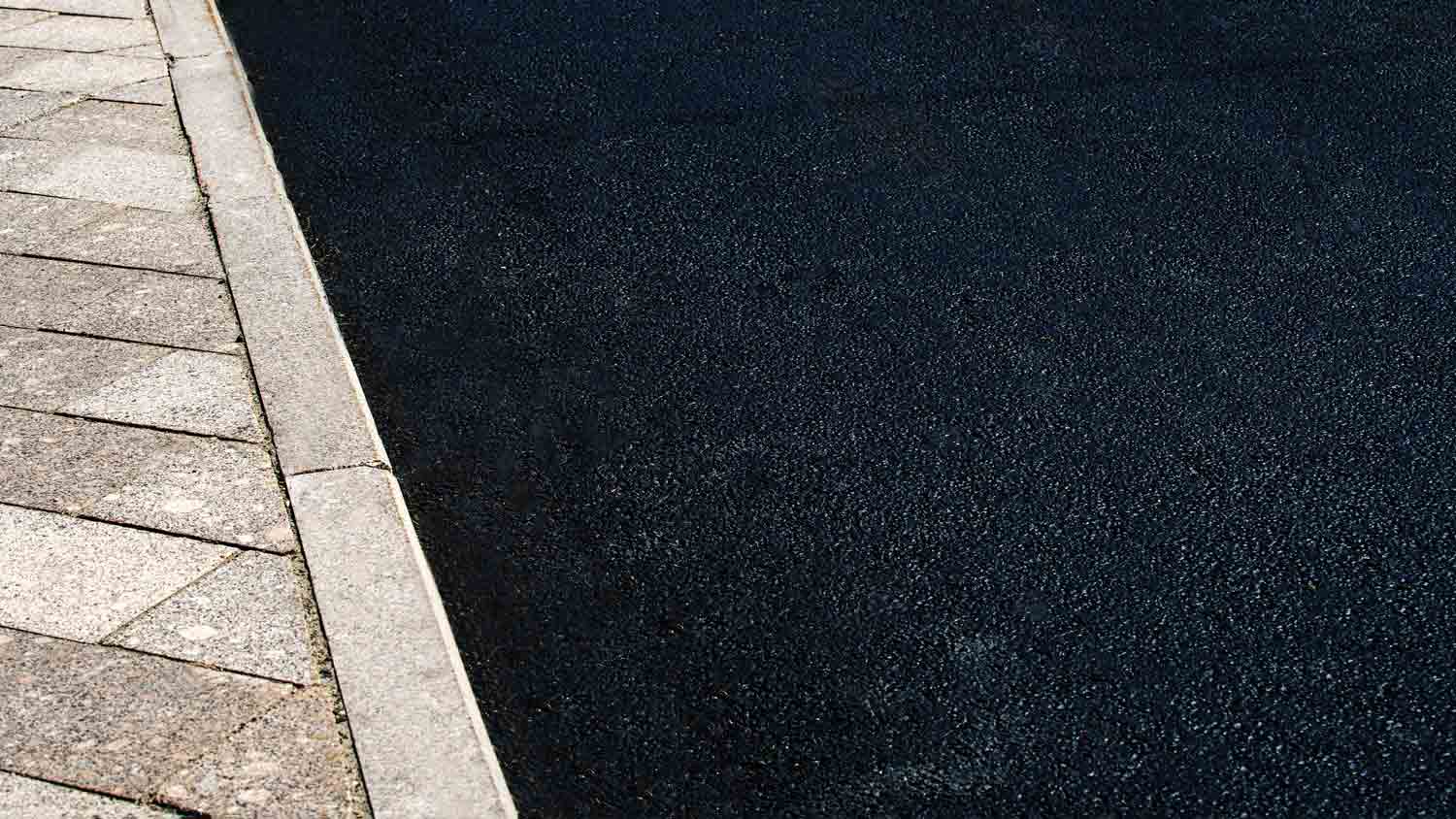
Discover the average paver driveway cost, including price ranges, key cost factors, and tips to help you budget for your driveway project.
Don’t let rain wash away your hard work


You finally took the plunge and got that brand-new driveway. Whether it’s sleek asphalt or sturdy concrete, you want it to last for decades, not just a few seasons. But before you start parking cars, there’s one of many questions that needs answering: When is it safe for your driveway to get wet? Water exposure at the wrong time can lead to cracks, surface damage, or a shorter lifespan. So, how long should you wait before rain, sprinklers, or even a quick car wash won’t spell trouble? Let’s find out.
A brand-new driveway and water don’t always mix—at least not right away. If you have fresh asphalt, keep it dry for at least 24 to 72 hours before it gets wet. Early exposure to rain can soften the surface, leading to dents and ruts. Concrete, on the other hand, thrives on moisture. It should be misted several times a day for the first week to strengthen properly—unless it’s winter, in which case extra water is a no-go. Ultimately, concrete does well with controlled moisture, while asphalt needs time to harden before facing serious rain, so check the forecast before installation.

Let’s focus on what factors affect your driveway’s drying time, including the weather, mix design, and installation quality.
Your driveway’s drying time isn’t just about whether you’re using asphalt or concrete—it’s about the weather, too. Warm days help speed up the process, while cold temperatures slow everything down. High humidity keeps moisture from evaporating, which means asphalt stays soft longer. For concrete, however, some moisture is good, while too much heat can dry it out too fast and cause cracks. Direct sunlight also helps an asphalt driveway dry more quickly, but for concrete, extreme heat does more damage. And then, of course, there’s rain. If it rains too soon (for asphalt) and too heavy (for concrete), your fresh surface is at risk. Ideally, the best time to pave your new driveway—for the best weather conditions—is between late spring and early fall.
Driveway drying time depends on the mix. Asphalt comes in different formulas—some dry faster than others. Plus, a thicker pour means a longer wait since more heat gets trapped inside. Concrete’s curing time depends on the water-to-cement ratio. More water means a slower cure, although special additives can speed things up or slow them down. For example, professional pavers might add calcium chloride to the wet concrete mix to speed up the drying time. And just like asphalt, a thicker concrete slab needs more time to fully set.
Installation plays a huge role in how long it takes your new driveway to dry. Skilled contractors know how to handle curing times and shield fresh pavement from bad weather. Good drainage is also important since standing water can weaken both asphalt and concrete. Then there’s compaction—pressing the materials down properly ensures long-term durability and prevents moisture-related damage. Cutting corners on installation leads to longer drying times and a weaker surface, which is why driveway installations are best left to your local professional paving contractors.
A new driveway is an investment that’s meant to last. On average, asphalt driveways can last up to 30 years, but if it gets wet too soon, you’ll shave years off that lifespan. Fresh asphalt needs time to set, and too much moisture early on weakens its structure, making it prone to cracks, ruts, and potholes.
Concrete isn’t any safer. While concrete can handle limited water in its early days, heavy rain can wash away the top layer, exposing the aggregate and creating a rough, uneven finish. Worse, excess moisture disrupts the curing process and can lead to weak spots, cracking, or even surface flaking. And once water seeps in, freeze-thaw cycles—weather conditions where the temperature continuously drops below freezing, rises above freezing, and then drops again—speed up deterioration. Proper drainage helps, but the key is keeping heavy water off in those critical first days. This could mean a tougher, more durable concrete driveway that lasts up to 50 years.

Your new driveway isn’t something you want to replace anytime soon, so you need to treat it right from day one. Concrete reaches full strength in about 28 days, but asphalt plays the long game, needing anywhere from six months to a year to fully cure. And that doesn’t mean that either one is immune to damage once the initial curing period is over. Water, oil, and everyday wear add up over time. Without proper care, that fresh, smooth surface won’t stay that way for long. Regular cleaning, proper drainage, and timely sealing aren’t just suggestions. They’re what will keep your driveway looking and acting new for—hopefully—decades.
Dirt, leaves, and debris aren’t just cosmetic issues. They trap moisture and accelerate wear and tear on your new driveway. Sweep your driveway frequently to prevent buildup, and act fast on spills. Oil, gasoline, and de-icing salts can eat away at both asphalt and concrete, which leads to premature cracking and deterioration. For stubborn stains, you can use a mild detergent with a scrub brush or a gentle pressure wash every few months to keep your driveway looking fresh without damaging the surface.
Standing water can be a threat to your beautiful, new driveway. If you notice puddles forming, you might have a grading issue. Water that lingers can weaken concrete and erode asphalt, causing cracks and potholes. Proper grading ensures water flows away from the surface, but if that’s not enough, you may need to install a new drainage system to divert excess runoff. You should also clear out your gutters and any nearby drainage systems to prevent overflow from seeping into your driveway’s foundation.
Sealing keeps your new driveway protected, but when should you do it, and how often? When sealing asphalt, wait at least 30 days—although it’s better for it to fully cure—before applying the first coat. After that, reseal every one to three years, depending on your climate. Colder regions with frequent freeze-thaw cycles may require annual sealing, but be careful not to seal it too soon, as this can trap oils and leave the asphalt too soft.
Concrete driveways require less frequent sealing—once every five years is enough. Over-sealing concrete can actually do more harm than good, in the form of hairline cracks. When done right, sealing protects against water, UV rays, and chemicals. So, while you may decide to take on this DIY project yourself, hiring your local driveway sealcoating professionals is the best way to ensure your driveway stands the test of time.
Some contractors offer warranties, but they’re usually limited to workmanship, materials, and structural integrity—not weather-related mishaps. That’s why it’s crucial to follow their guidelines on timing. If your driveway gets soaked too soon, repairs won’t be free. If repairs or replacement aren’t covered, check your homeowner's insurance. Standard policies won’t protect against regular rain, but they might cover damage from hail or the weight of ice and snow. Call your contractor and insurance provider to see where you stand. If coverage isn’t an option, addressing the issues early can save you from costly repairs or replacements.
If your new driveway takes on water too soon, don’t panic—but don’t ignore it either. First, inspect it. Small surface flaws like minor discoloration or slight roughness aren’t a big deal as repairs might be enough to prevent long-term damage. However, cracks, ruts, or pooling water could spell trouble. Asphalt that’s softened or uneven may need resurfacing, but if the structure is compromised, that could mean a full replacement. The same goes for concrete. Surface erosion or cracks might require patching, but widespread weakening will shorten its lifespan. Contact your contractor as soon as possible. They’ll assess the damage and recommend the best fix.
From average costs to expert advice, get all the answers you need to get your job done.

Discover the average paver driveway cost, including price ranges, key cost factors, and tips to help you budget for your driveway project.

When designing a driveway, it's crucial to know the cost of your driveway apron—the transitional ramp that connects you to the road. Here's what to know.

Do you need more parking for your business or home? Here's everything you need to know about the cost to pave a parking lot.

Is tar still used in paving? How does it compare to asphalt? Learn their differences, from composition to durability, and why asphalt remains the top choice.

Small cracks and holes in driveways can be repaired at home using filler and the right technique. Read this guide to learn how to do asphalt repair DIY-style.

Get new driveway inspiration with this list of the best driveway ideas for all types of homes.